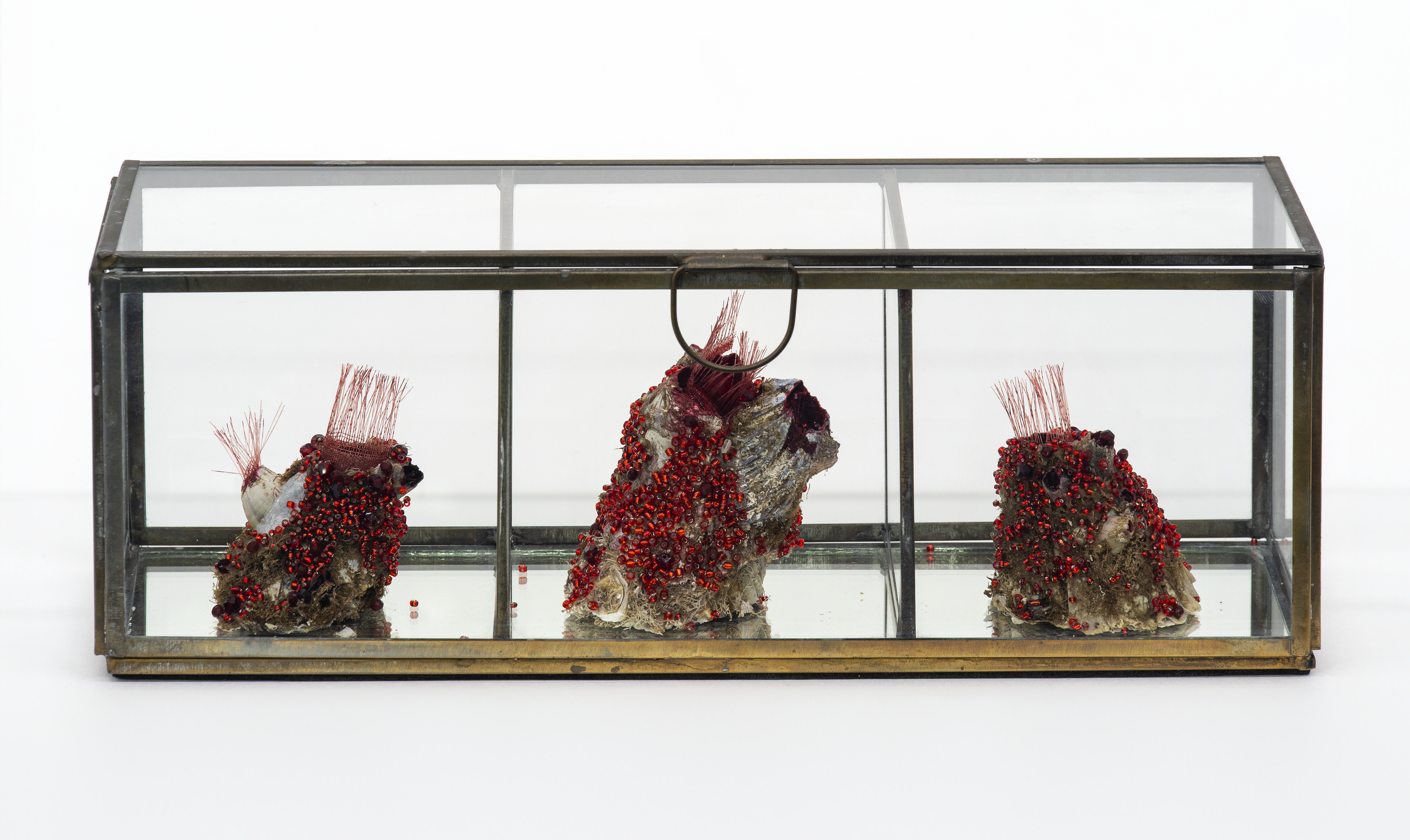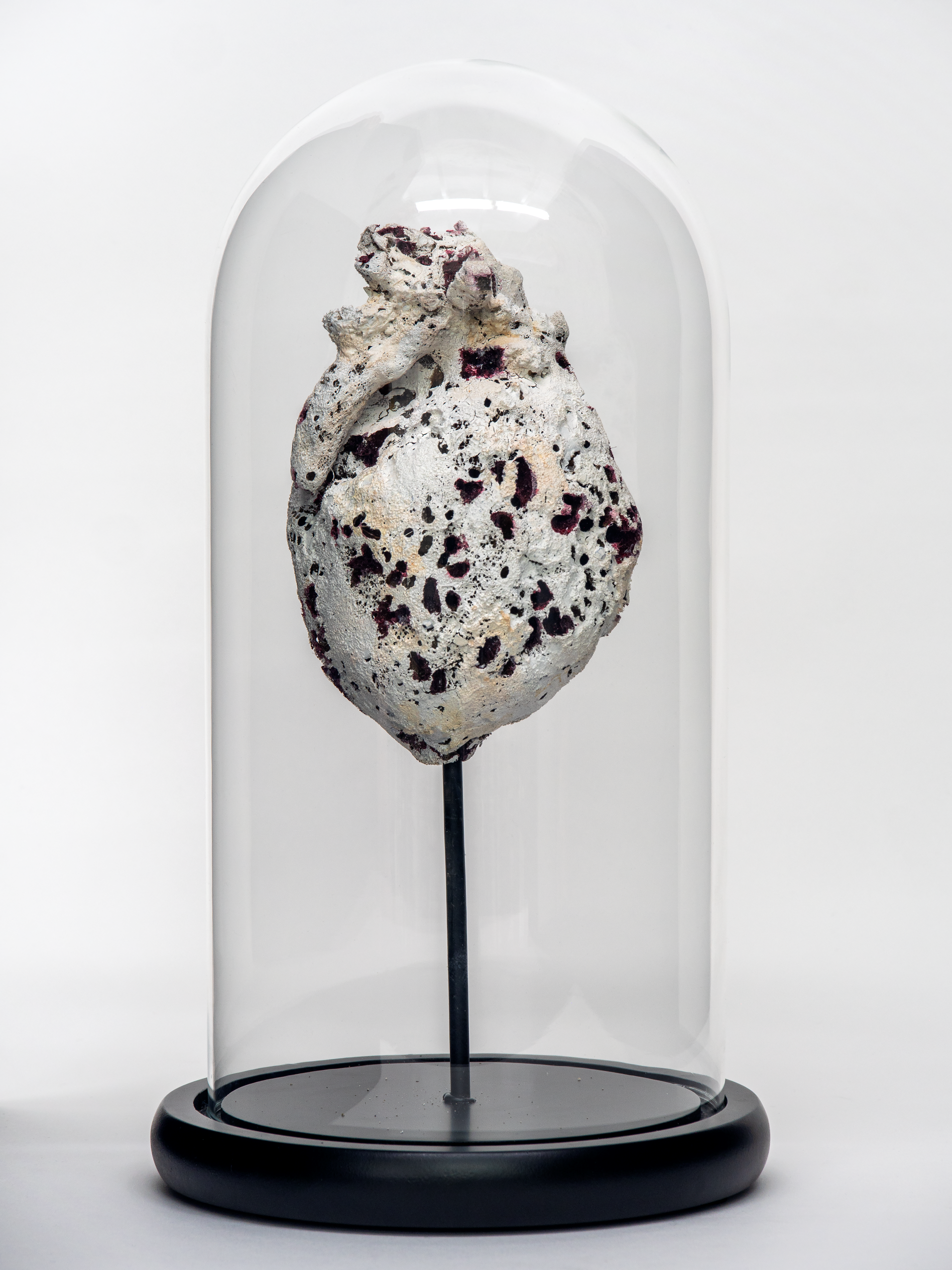Cloth, jewels and the ocean, while commonly synonymous with femininity, symbolised patriarchal and colonial power during the Dutch Golden Age of the seventeenth century. This included the Gothic tale of the Batavia shipwreck and mutiny which occurred at the Houtman Abrolhos in 1629. These symbols have been utilised as key materials within each of my artworks, subverting their association with masculine wealth and dominion.
Once was lost, now am found, features a female body emerging from a seaweed-stained, barnacle-encrusted sheet, washed ashore from the depths of the Indian Ocean. Cloth was currency for the Batavia mutineers, as were the bodies of several women used for ‘common service’. This figure, a liminal being between a ghost and a shipwreck artefact, serves as a haunting reminder of the female experience of the shipwreck. Tell-Tale Heart further builds upon this concept. Drawing inspiration from the classic Gothic story by Edgar Allan Poe, this heart-shaped sea sponge serves as a reminder of lives taken by the mutineers. However, unlike the heart in Poe’s tale, this heart, stained white to evoke the bleached-coral shores of Beacon Island, is not hidden from view, but in plain sight within a decorative case. Meanwhile, Riches engages with the grotesque to depict the greater value placed upon salvaging treasure over human lives by the Dutch East India Company, extending to no attempt to ascertain the testimonies of the seven female survivors. Through engagement with the sublime and monstrous aspects of femininity, these works foreground the female experiences of the Batavia in an otherwise historically male-centered narrative.


